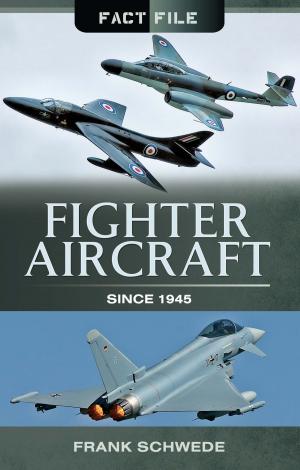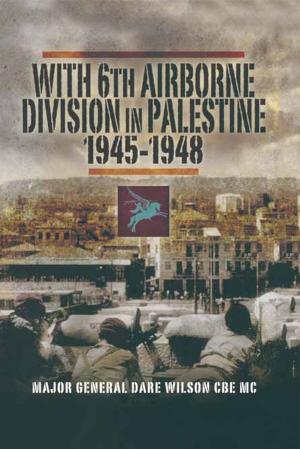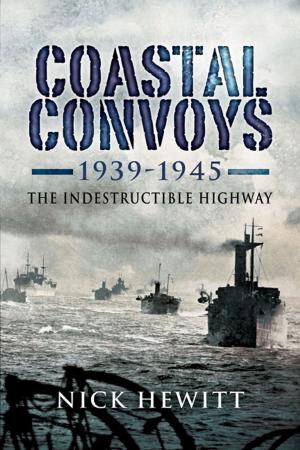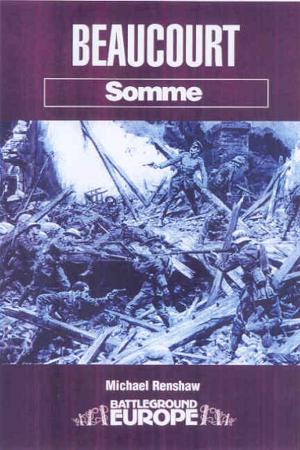From Fury to Phantom
An RAF Pilot's Story - 1936-1970
Nonfiction, History, Military, Aviation, Modern, Biography & Memoir, Historical| Author: | Richard Haine (Group CptOBE DFC) | ISBN: | 9781783034826 |
| Publisher: | Pen and Sword | Publication: | April 19, 2005 |
| Imprint: | Pen and Sword | Language: | English |
| Author: | Richard Haine (Group CptOBE DFC) |
| ISBN: | 9781783034826 |
| Publisher: | Pen and Sword |
| Publication: | April 19, 2005 |
| Imprint: | Pen and Sword |
| Language: | English |
Richard 'Dickie' Haine first went solo in a de Havilland Gipsy Moth during August 1935, after only one week of tuition. He joined the RAF shortly afterwards as a Direct Entry Sergeant Pilot and left the service in 1970 as a Group Captain, OBE, DFC. During his long career he flew an extraordinary variety of aircraft types, starting with small biplanes that were designed upon the philosophy gained during World War I and finishing with Britain's V Bomber force and American-designed fighters at the very edge of space.
His first posting was with No 25 Squadron flying Hawker Demons and Gloster Gladiators during 1936 until the unit was re-equipped with Bristol Blenheims and undertook a night-fighter role. These were difficult days during which the primitive radar system made it all but impossible to locate incoming enemy aircraft, but the squadron were also sent on several offensive missions over the recently invaded European countries. Haine was lucky to escape when his aircraft was brought down and crash-landed on a small Dutch island after an abortive raid on German occupied Walhaven airfield. After a hazardous journey on foot through the increasingly threatened lowlands he escaped on a RN Frigate. During the Battle of Britain he continued in the night-fighting role flying from Manston in Kent.
Now a Commissioned officer, he was given command of No 96 Squadron, flying Boulton Paul Defiants in the night defense of the industrial heartland of England. The, after a spell as a Staff Officer at Bentley Priory, he took command of No 448 (New Zealand Squadron) who were equipped with the superlative de Havilland Mosquito. During this period the squadron had an enviable score sheet in downing enemy aircraft during many night operations.
In 1945 the author was dispatched by ship to take charge of a newly formed wing to aid those forces still at war with Japan. However, whilst still at sea, the war ended and Haine found himself in Hong Kong with the task of getting Kai Tak airport operational immediately after its liberation.
His post-war flying was heavily involved in the development of jet-powered fighters and sophisticated new weaponry. He spent a long period as Wing Commander in Habbinya and Akrotiri and ended his career training the navigators of the V-Bomber nuclear Force.
Richard 'Dickie' Haine first went solo in a de Havilland Gipsy Moth during August 1935, after only one week of tuition. He joined the RAF shortly afterwards as a Direct Entry Sergeant Pilot and left the service in 1970 as a Group Captain, OBE, DFC. During his long career he flew an extraordinary variety of aircraft types, starting with small biplanes that were designed upon the philosophy gained during World War I and finishing with Britain's V Bomber force and American-designed fighters at the very edge of space.
His first posting was with No 25 Squadron flying Hawker Demons and Gloster Gladiators during 1936 until the unit was re-equipped with Bristol Blenheims and undertook a night-fighter role. These were difficult days during which the primitive radar system made it all but impossible to locate incoming enemy aircraft, but the squadron were also sent on several offensive missions over the recently invaded European countries. Haine was lucky to escape when his aircraft was brought down and crash-landed on a small Dutch island after an abortive raid on German occupied Walhaven airfield. After a hazardous journey on foot through the increasingly threatened lowlands he escaped on a RN Frigate. During the Battle of Britain he continued in the night-fighting role flying from Manston in Kent.
Now a Commissioned officer, he was given command of No 96 Squadron, flying Boulton Paul Defiants in the night defense of the industrial heartland of England. The, after a spell as a Staff Officer at Bentley Priory, he took command of No 448 (New Zealand Squadron) who were equipped with the superlative de Havilland Mosquito. During this period the squadron had an enviable score sheet in downing enemy aircraft during many night operations.
In 1945 the author was dispatched by ship to take charge of a newly formed wing to aid those forces still at war with Japan. However, whilst still at sea, the war ended and Haine found himself in Hong Kong with the task of getting Kai Tak airport operational immediately after its liberation.
His post-war flying was heavily involved in the development of jet-powered fighters and sophisticated new weaponry. He spent a long period as Wing Commander in Habbinya and Akrotiri and ended his career training the navigators of the V-Bomber nuclear Force.















